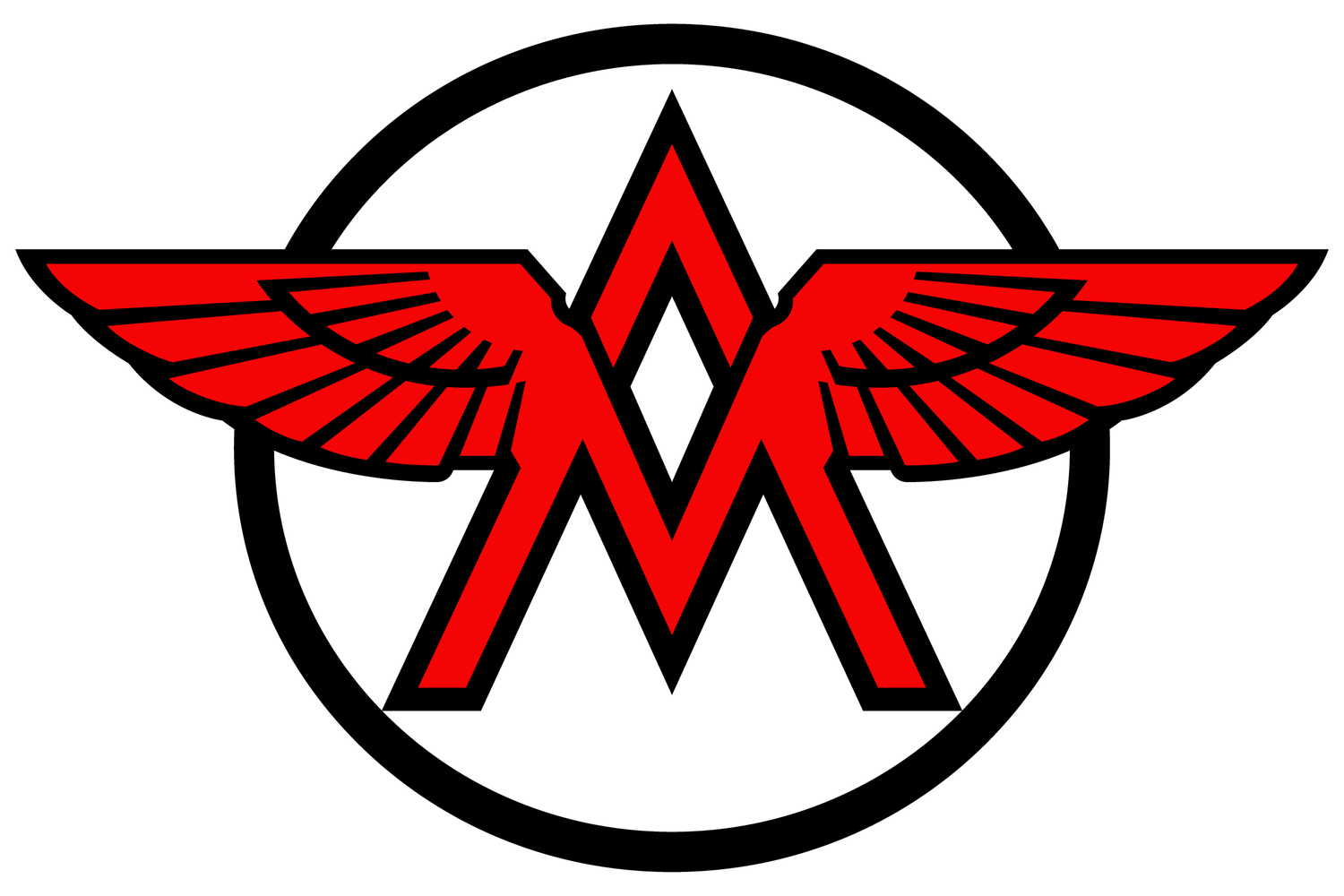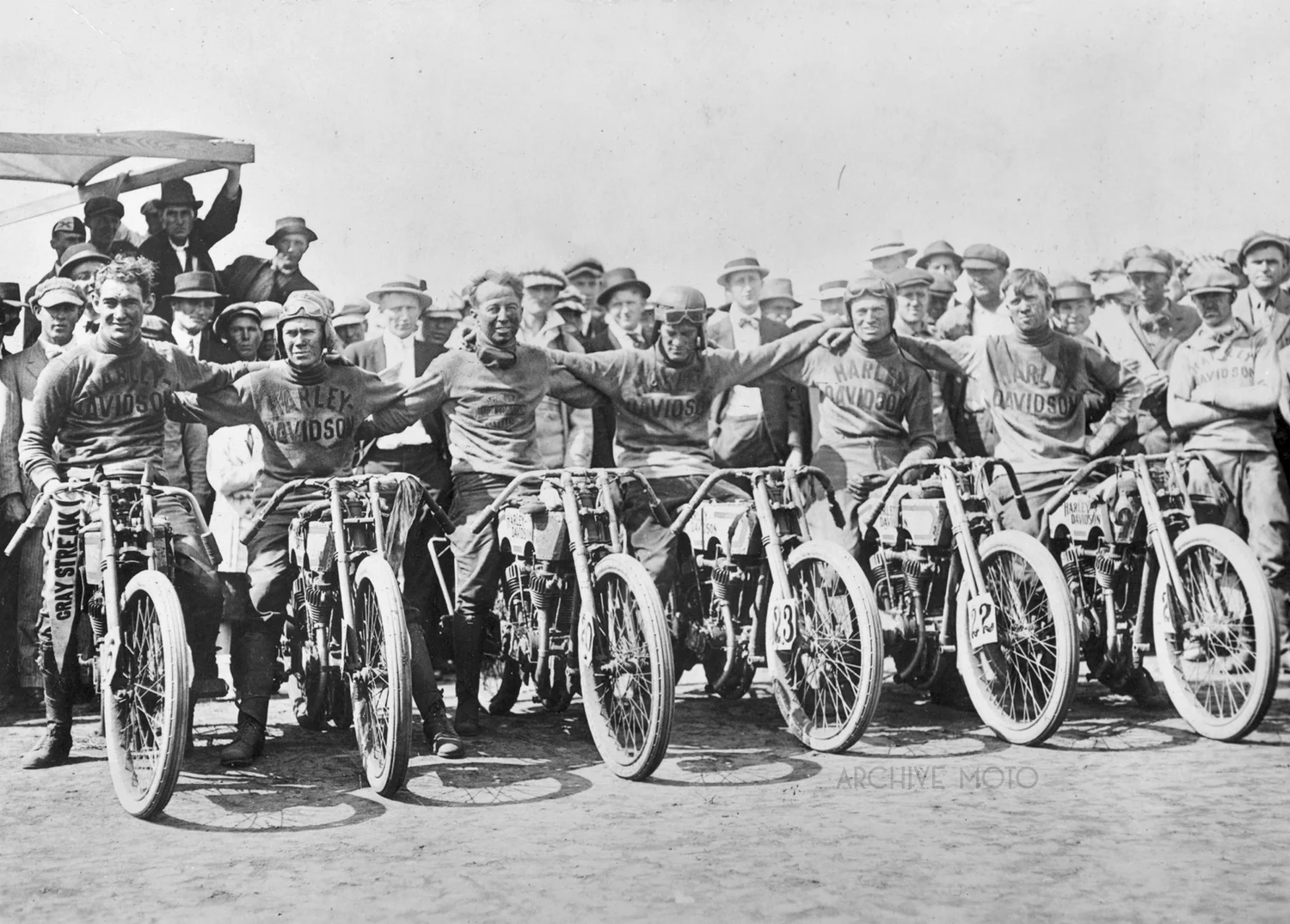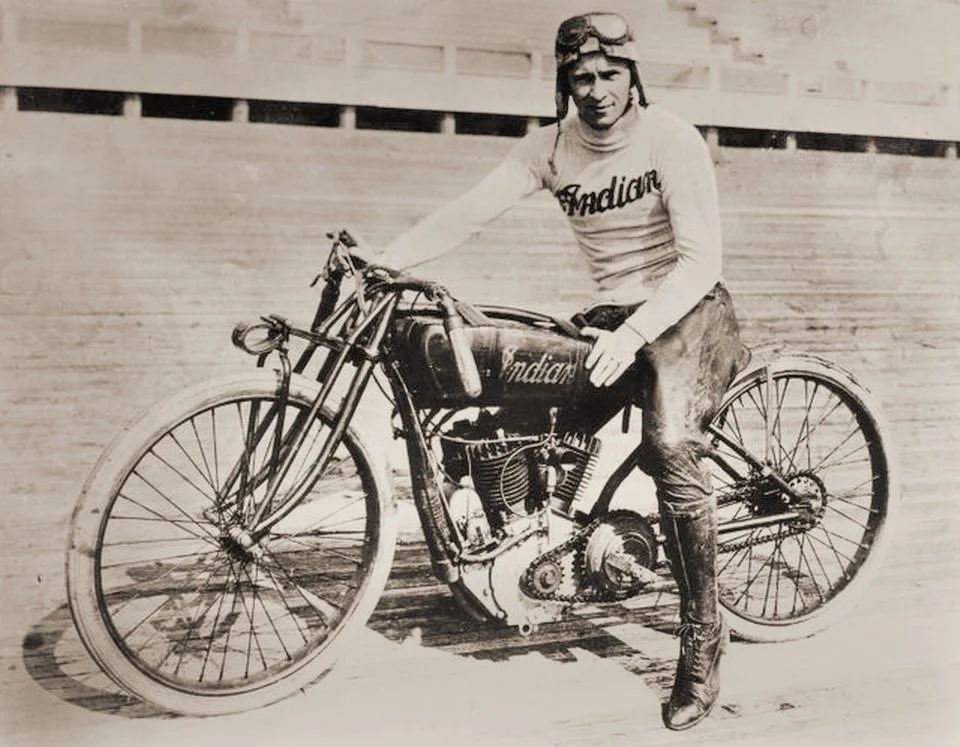"Roads? Where we're going, we don't need roads." That may have been the case for time machines in 1985, but in 1906, most everyone in America desperately wished they had a decent road or two. The turn of the 20th century was a time of significant change in America, a moment when the country first began its transition into its modern form. It was a technological renaissance, a time of social, economic, and political growth which resulted in the emergence of American culture as we know it today. Within the bloom were new modes of transportation, giving birth to new industries, sports, and recreation. The rapid pace of change and innovation brought a need for new infrastructure. As was the case with much of the motorcycling world at the time, the roots of development and progress rest deep in the culture of bicycling.
Nearly 100 years ago, on May 14, 1922, a handful of the world's most notable and beloved motorcycle racers walked onto the timbers of the San Carlos Speedway to compete in a series of thrilling board track races. Despite being at the height of its first Golden Era, the momentum of Class A motorcycle racing in America was beginning to stall. Racings popularity had been a wave fueled by public enthusiasm and the limitless financial support of the big factories, but by 1922 that wave seemed to have crested. The once sensational, circular board track motordromes that had captivated the country a decade before had been ghosts for years by 1922.
What is it about these old machines that captivates us after all of these years? Is it the raw engineering of their power, the elegant simplicity of their purpose? The machines, the weapons in the original arms race of speed, have become icons in their own right. The pioneers who ran them wide open and, on occasion, beyond their limits are true legends of American motorsport. Their ironclad determination, be it on the dirt or the boards, etched their names into the history of our culture, and the rare images that survived have immortalized the moments when titans once rode among us.
It is hard to know what to say in the face of loss, but I wanted to meet this moment as best I could. There are people in life that help shape who you are, who help shape who you become, and Dale Walksler was very much one of those people for me. Through his generosity and kindness, through his encouragement and support, and through his seemingly limitless knowledge and enthusiasm for old motorcycles, he helped me discover and explore something in myself which has been invaluable.





